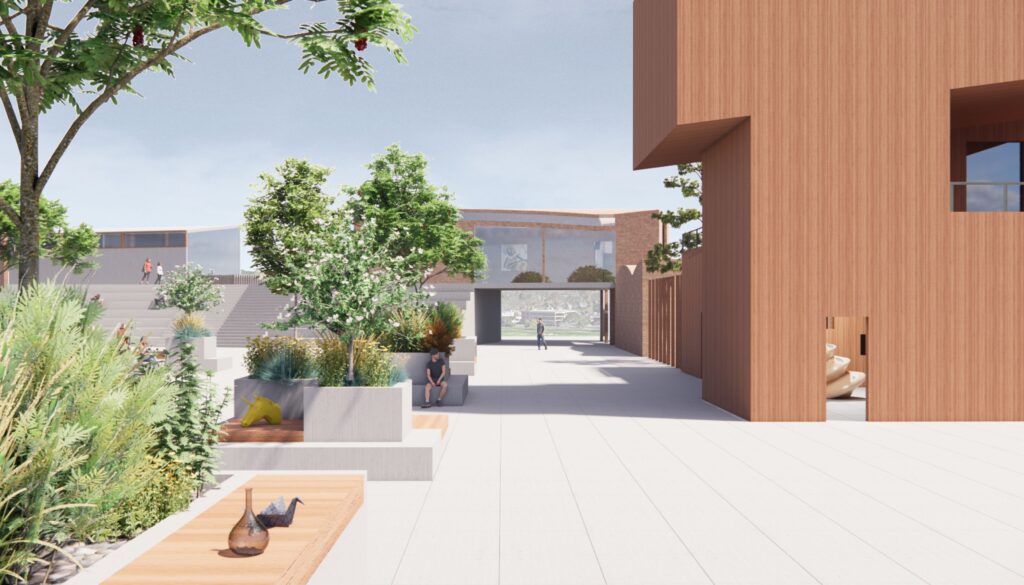MArch students sweep ANFA student design competition
Students in the spring 2024 class ARCH 249 Sensory Space, taught by Gail Brager, director of the Center for Environmental Design Research and distinguished professor of architecture, brought home first and second place wins from the Academy of Neuroscience for Architecture (ANFA) Student Design Competition.
The competition spotlights the transformative potential of combining neuroscience and design to enhance emotional and mental well-being. Students were invited to conceptualize a community center inspired by the iconic Salk Institute campus designed by Louis Kahn in La Jolla, California. The international jury reviewed projects from over 170 students from 30 schools across 14 countries, evaluating the work based on creativity, feasibility, and integration of neuroscience principles.
First Place: Spectral Pathways: Center for Neuro-Architecture
Emily Ely (MArch 2024), Laurenne Ross (MArch 2025), Troy Neves (MArch 2025)

This project incorporated sensory zoning to address various sensitivities, demonstrating an excellent integration of research into design. Jurors appreciated the clear, balanced, and engaging presentation, reflecting a sophisticated understanding of how environments can support diverse cognitive and sensory needs.
Second Place: Architecture + Memory
Ezra Levitch (MArch 2025), Eliot Park (MArch 2025), Romi Sadlik (MArch 2026), Jacqueline Zhou (MArch 2026)

The project focused on designing a memory-enhancing environment for Alzheimer’s patients, demonstrating how neuroscience can inform architectural design to improve cognitive function and wellbeing. The jury praised its practical application and solid foundation in neuroscience, showcasing how design can directly impact cognitive functions and improve the quality of life for individuals with memory impairments.
UC Berkeley’s winning designs drew their inspiration from classwork using frameworks from DeKay & Brager’s new book Experiential Design Schemas, patterns from biophilic design, HOK’s work on designing for a neurodiverse workplace, and broader principles of sustainability.